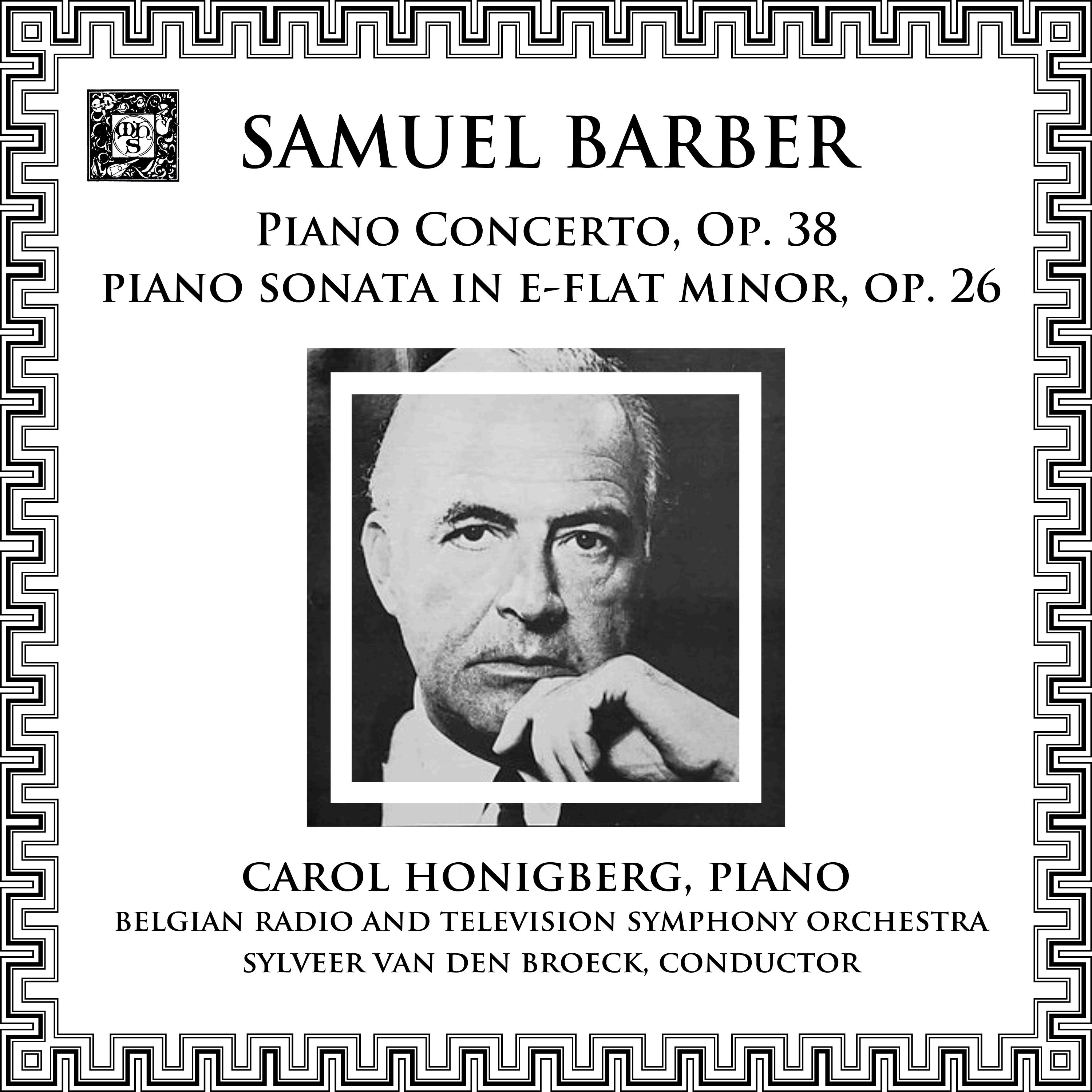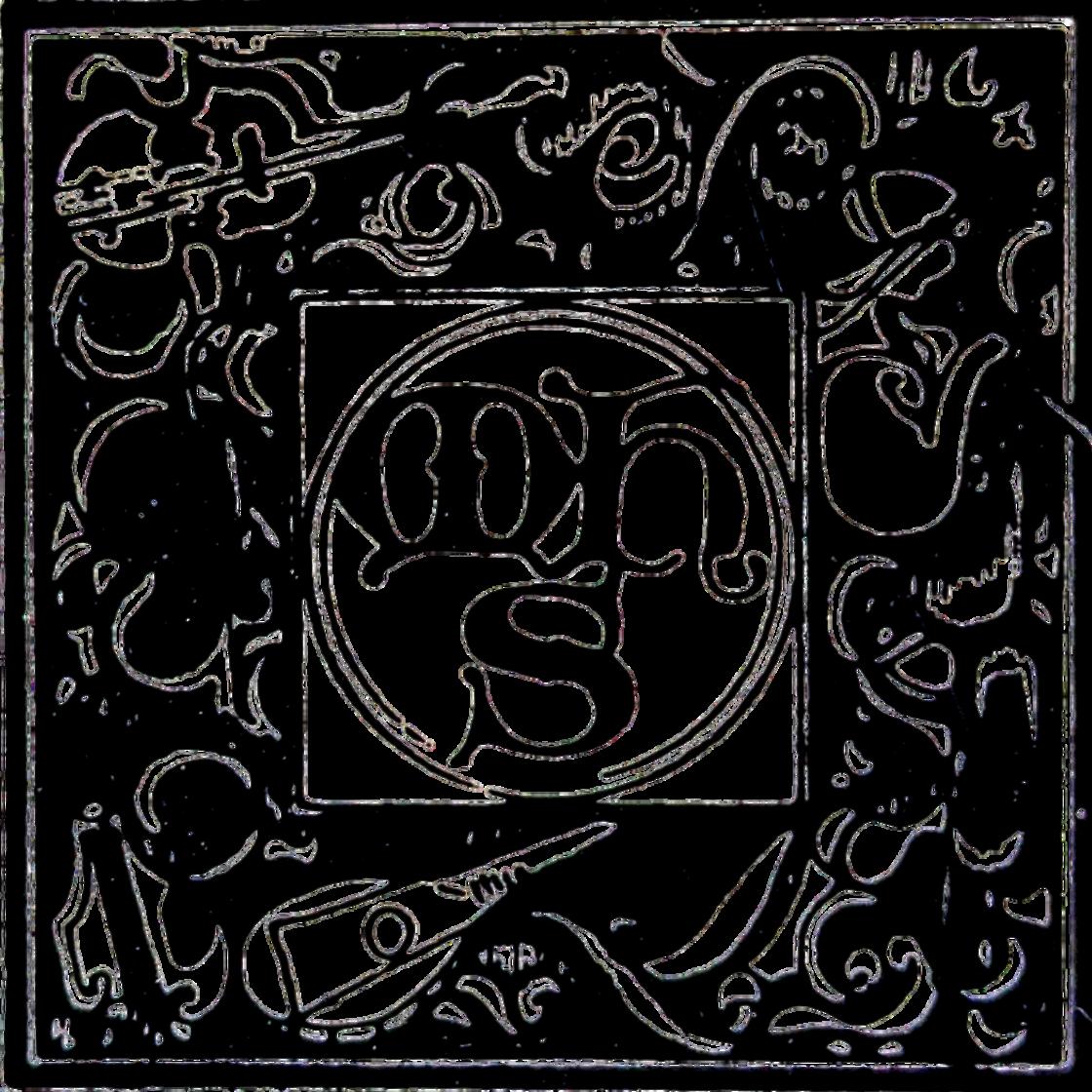
Samuel Barber (1910-1981)
Concerto for Piano and Orchestra, Op. 38
1. Allegro appassionato
2. Canzone: Moderato
3. Allegro molto
Sonata for Piano in E-flat Minor, Op. 26
1. Allegro energico
2. Allegro vivace e leggèro
3. Adagio mèsto
4. Fuga: Allegro con spirito
Carol Honigberg, Piano
Belgian Radio and Television Symphony Orchestra
Sylveer Van den Broeck, Conductor
The music of Samuel Barber has often been described as “neoromantic” a style of writing which conbines traditional music materials with certain contemporary characteristics. Equally successful in vocal and instrumental forms, Barber's primary accomplishment as a composer is the subjective expression of personal emotions. Passages of extreme dissonance or atonality are generally reserved for moments of high tension and occur within a refined, conventional style based on traditional forms, late-19th century tonality and warm, tender lyricism.
As a child in West Chester, Pennsylvania, Sam Barber enjoyed several musical advantages. His mother was an eager amateur musician, and his mother's sister, better known as Louise Homer (1871-1947), was a famous contralto whose career spanned the so-called "Golden Age of Opera" from 1898 to 1929. She was trained in Paris and sang all the standard roles at major houses in Europe and the U.S. In addition, she made a number of early gramophone recordings with Caruso, Gigli, and Martinelli. Louise brought another musician into the family when she married Sidney Homer (1864-1953), a pupil of George Chadwick and Josef Rheinberger.
Uncle Sidney taught at Boston and New York City and composed several popular songs, such as the Bandanna Ballads (including the Banjo Song) and Mother Goose. Both Sidney and Louise, taking a personal interest in young Samuel, offered valuable support, advice, and encouragement.
At age 14, Barber enrolled at the Curtis Institute in Philadelphia; this was the year 1924 and the first season that the Institute accepted students. Under the sponsorship of Mary Louise Curtis Bok, daughter of the wealthy publisher Cyrus H.K. Curtis, this unique institution was founded to provide free instruction to talented students with a staff of gifted teachers and world-class performers. Mrs. Bok subsequently became one of Barber's most devoted benefactors.
Thus Barber began a demanding course of study under several accomplished artists: voice with Emilio Gogorza, conducting with Fritz Reiner, piano with George Boyle and Isabella Vengerova, and composition with Rosario Scalero. Scalero's competence as a teacher might well be judged by an amazing list of superb students that includes Marc Blitzstein (1905-1964), Luca Foss (b. 1922), Virgil Thomson (b. 1896), and Gian Carl
Menotti (b. 1911). With Menotti, Barber formed a lifelong friendship which proved crucial to the creation of the operas Vanessa (1957, libretto by Menotti) and Antony and Cleopatra (1966, revised by Menotti in 1974). Barber made impressive strides as a singer at Curtis. He gave several school recitals and later performed in Vienna after further vocal study with John Braun. In 1935, he sang broadcasts for NBC radio and recorded his own musical setting of Matthew Arnold's poem Dover Beach (1931).
Other compositions from Barber's Curtis years include a Serenade for string quartet or string orchestra (1929), Overture to The School for Scandal for full orchestra (193133), Sonata for violin and piano (1931), and Sonata for cello and piano (1932).
Arturo Toscanini examined Barber's scores in 1935 and three years later gave the first performances of the First Essay and the Adagio for Strings (an orchestral transcription of the second movement from his String Quartet) in broadcast concerts with the NBC Symphony Orchestra. The Adagio has since become Barber's most popular and frequently performed work.
In 1939, Barber returned to Curtis to teach composition and orchestration. He also directed a madrigal group and completed a number of pieces, including his Violin Concerto, op. 14. From 1943 to the end of World War II, he served in the Army Air Force in Fort Worth and wrote the Commando March for military band; a Second Symphony, op. 19, and Four Excursions, op. 20 for piano.
The Beams Prize of Columbia University went to Barber in 1928 and again, after his graduation from Curtis, in 1933. These awards, which helped finance his first trips to Europe, were followed by Pulitzer Traveling Fellowships and the prestigious Prix de Rome. While living abroad, the young composer completed his First Symphony (1935-36), Music for a Scene from Shelley (1933), and a String Quartet (1936). Performances of these works in New York and Rome increased Barber's international reputation, and the First Symphony became the first composition by an American composer to be played at the Salzburg Festival in July, 1937; the conductor was Artur Rodzinski.
After his discharge, a Guggenheim Fellowship took Barber back to Europe for another extended residence during which time he became a consultant to the American Academy in Rome. He received several important commissions for largescale works, and completed the Cello Concerto, op. 22, the ballets Medea, op. 23 and Souvenirs, op. 28, Knoxville: Summer of 1915, op. 24, Hermit Songs, op. 29, and the Prayers of Kierkegaard, op. 30.
The commission for his Piano Sonata, op. 26 came at this time from the League of Composers, an organization founded in 1923 to promote contemporary music through broadcasts, concerts, commissions, and the quarterly magazine Modern Music. The work was finished to commemorate the League's 25th anniversary, and was first performed in New York by Vladimir Horowitz in January, 1950. It was an immediate success with both critics and music lovers. For pianists, it is a brilliant, challenging, virtuoso showpiece of great musical substance and is now considered one of the classic works for keyboard by an American composer.
entire work with the single tonality of E-flat minor. The opening Allegro energico begins at the lower end of the keyboard with sharply articulated, upbeat figures in dotted rhythms. This is immediately combined with a contrasting, more fluid figure in triplets which represents Barber's first intentional use of a 12-tone row. A second thematic entity, marked espressivo, combines previously heard dotted and triplet rhythms in a more lyric style, and the following episode introduces two tiny sixteenth-note motives which figure prominently in the development and climactic recapitulation.
Following the example of Beethoven, Barber utilized the formal scheme of four contrasting movements and unified the
All intensity disappears in the second movement: Allegro vivace e leggero, which is actually a scherzo in 6/8 time. Near the beginning, there is an amusing allusion to waltz rhythm with brief fluctuations between triple and duple meter. Several rows are employed in the central Adagio mesto. However, the composer never allows the strict technique of dodecaphony to stifle his natural melodic gift. The material is ingeniously varied and constantly enriched to produce an expressive movement in A B A form which combines the formal characteristics of passacaglia and recitative. The finale (Allegro con spirito) is a brilliant
enormously difficult, toccata-like fugue. Only one central episode in E major (scherzando ma a tempo) provides some relief to the movement's otherwise harddriving perpetual motion.
Barber turned to the piano again in 1962 with a commission for a lengthy work for orchestra to mark the centennial year of his publisher, the firm G. Schirmer, Inc. This became the Piano Concerto, op. 38, completed in late summer, 1962 and first performed at Philharmonic Hal, New York during the inaugural week of the Lincoln Center for the Performing Arts. On that occasion, John Browning was the solo pianist with the Boston Symphony Orchestra under Erich Leinsdorf. In spring, 1963, the Concerto and its composer received the Pulitzer Prize for Music.
For the premiere performance, Barber provided the following description of his Concerto: “The Concerto begins with a solo for piano in recitative style in which three themes or figures are announced, the first declamatory, the second and third rhythmic. The orchestra interrupts, piu mosso, to sing the impassioned main theme, not before stated. All this material is now embroidered more quietly and occasionally whimsically by
piano and orchestra until the tempo slackens (doppio meno mosso) and the oboe introduces a second lyric section. A development along symphonic lines leads to a cadenza for soloist, and a recapitulation with fortissimo ending.
"The second movement (Canzone) is songlike in character, the flute being principal soloist. The piano enters with the same material, which is subsequently sung by muted strings, to the accompaniment of piano figurations.
The last movement (Allegro molto in 5/8), after several fortissimo repeated chords by the orchestra, plunges headlong into an ostinato bass figure for piano, over which several themes are tossed. There are two contrasting sections: one (un pochettino meno) for clarinet solo, and one for three flutes, muted trombones and harp (con grazia) where the fast tempo relents; but the ostinato figure keeps insistently reappearing, mostly by the piano protagonist, and the 5/8 meter is never changed."
Michael Keeley
A formidable keyboard talent, the American pianist Carol Honigberg has been acclaimed for her "dynamic artistic temperament." Guest soloist with major symphony orchestras in Europe and in the United States, her recent performances include those with the Dutch Radio Philharmonic, the Belgian Radio and Television Symphony Orchestra, and with the Chamber Orchestra of Lausanne. She has thrilled recital audiences in the major cities of France, Belgium, Holland, Switzerland, Ireland, and Spain. Miss Honigberg performs repeatedly for France Musique on La Radio et Television Francaise, Holland's NOS, La Radio Suisse-Romande, Radio Ireland, and for the Belgian Radio and Television Network.
Miss Honigberg maintains a busy concert schedule in the United States. She made her New York debut in Alice Tully Hall in Lincoln Center in 1975. She has often been featured in live broadcasts on the Chicago radio station WFMT. Her exceptional versatility brings her together with notable musicians in frequent chamber music programs. The transparent beauty of her interpretation of French music, the power and brilliance in the contemporary, and her incomparable romantic lyricism in 19th-century piano works, place her in the front rank of today's
performing pianists. This is Carol Honigberg's 2nd recording for The Musical Heritage Society. Her previous record, Carol Honigberg Plays 20th-Century Piano Music (MHS 4474F), features music by the American composers Griffes and Barber, and the Belgian composers Lonque, de Meester, and Poot.
Piano Concerto recorded in Studio 4 of the B.R.T., Flagey Square, Brussels, Belgium; Produced by Heribert De Caluwé; Engineering: Jan Seghers; Bosendorfer Piano.
Piano Sonata recorded at Universal Recording Studios, Chicago, Illinois Engineering: Richard Fairbanks; Bosendorfer Piano.
Mastering: Bill Kipper, Masterdisk Corp.
Cover Art: Samuel Barber
(courtesy New York Public Library)
Jacket Design: Jayne Travis
Library of Congress Catalog Card Number: 84-743228
Amreco, Inc., 1984
Musical Heritage Society, Inc., 1984

